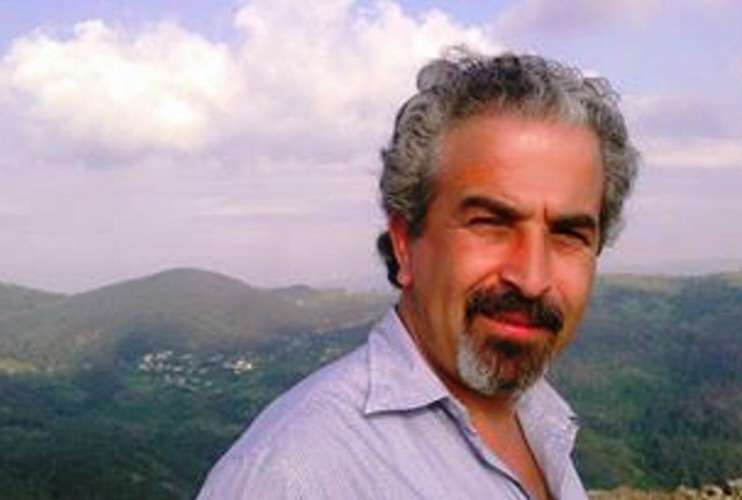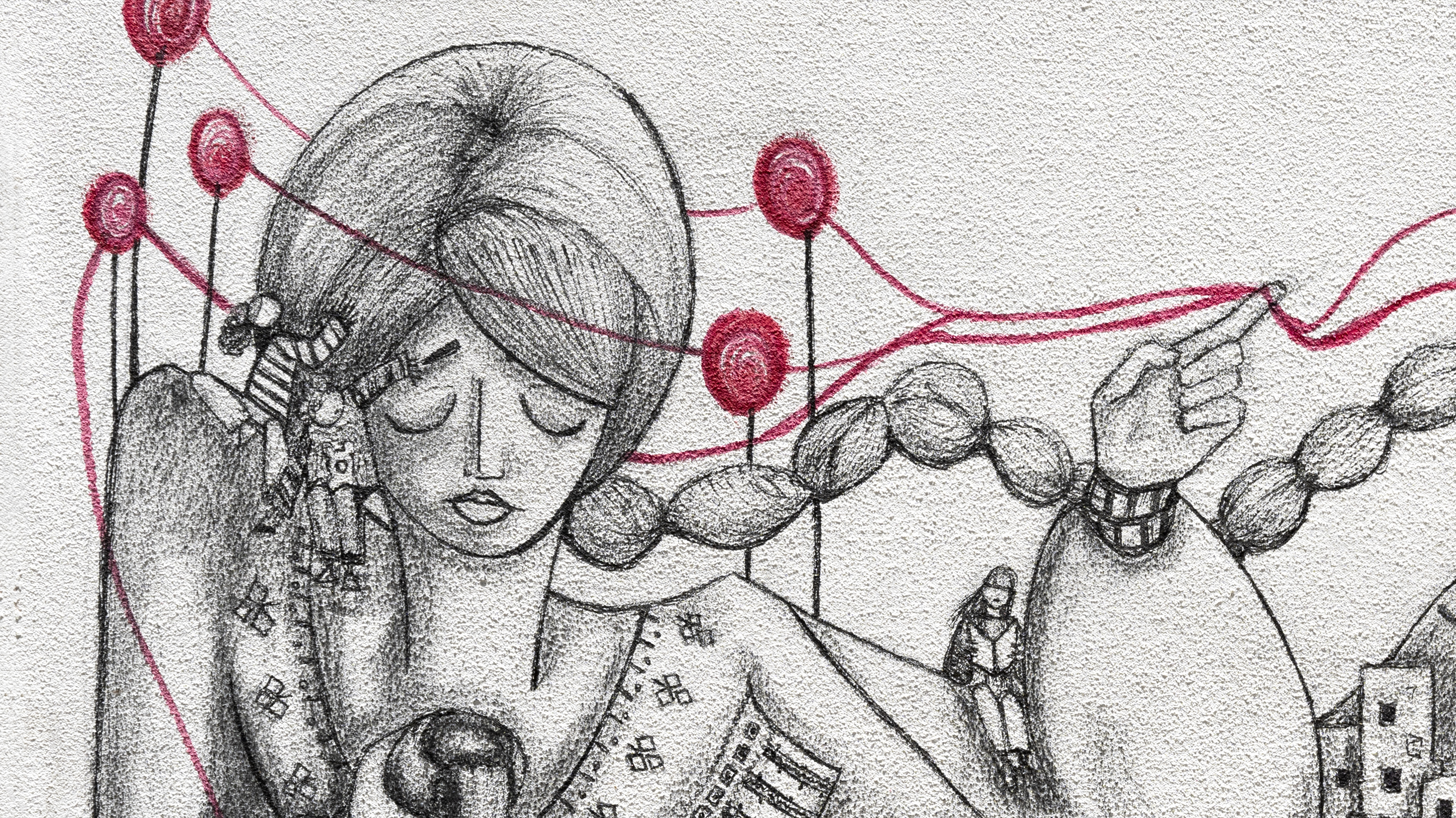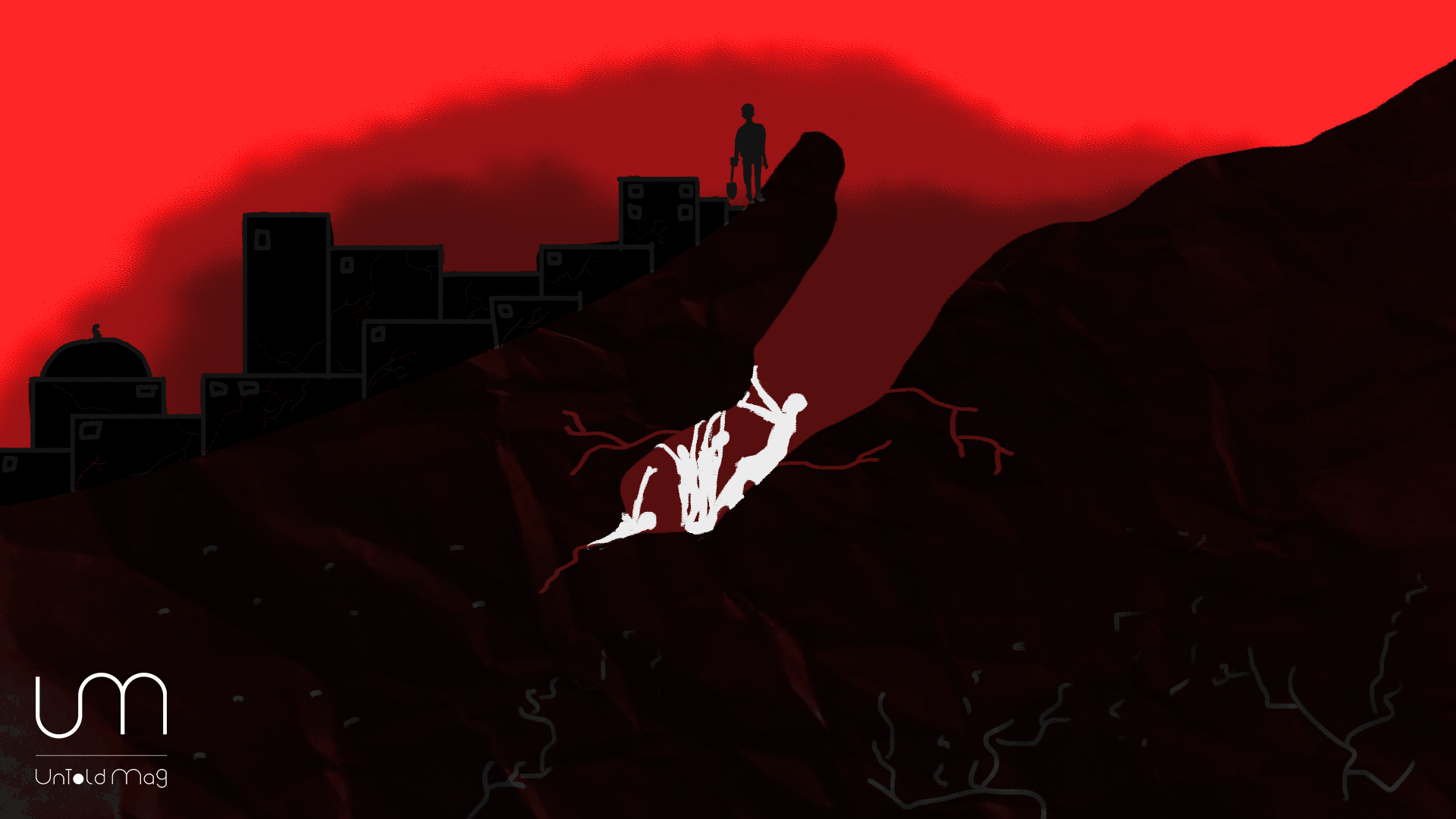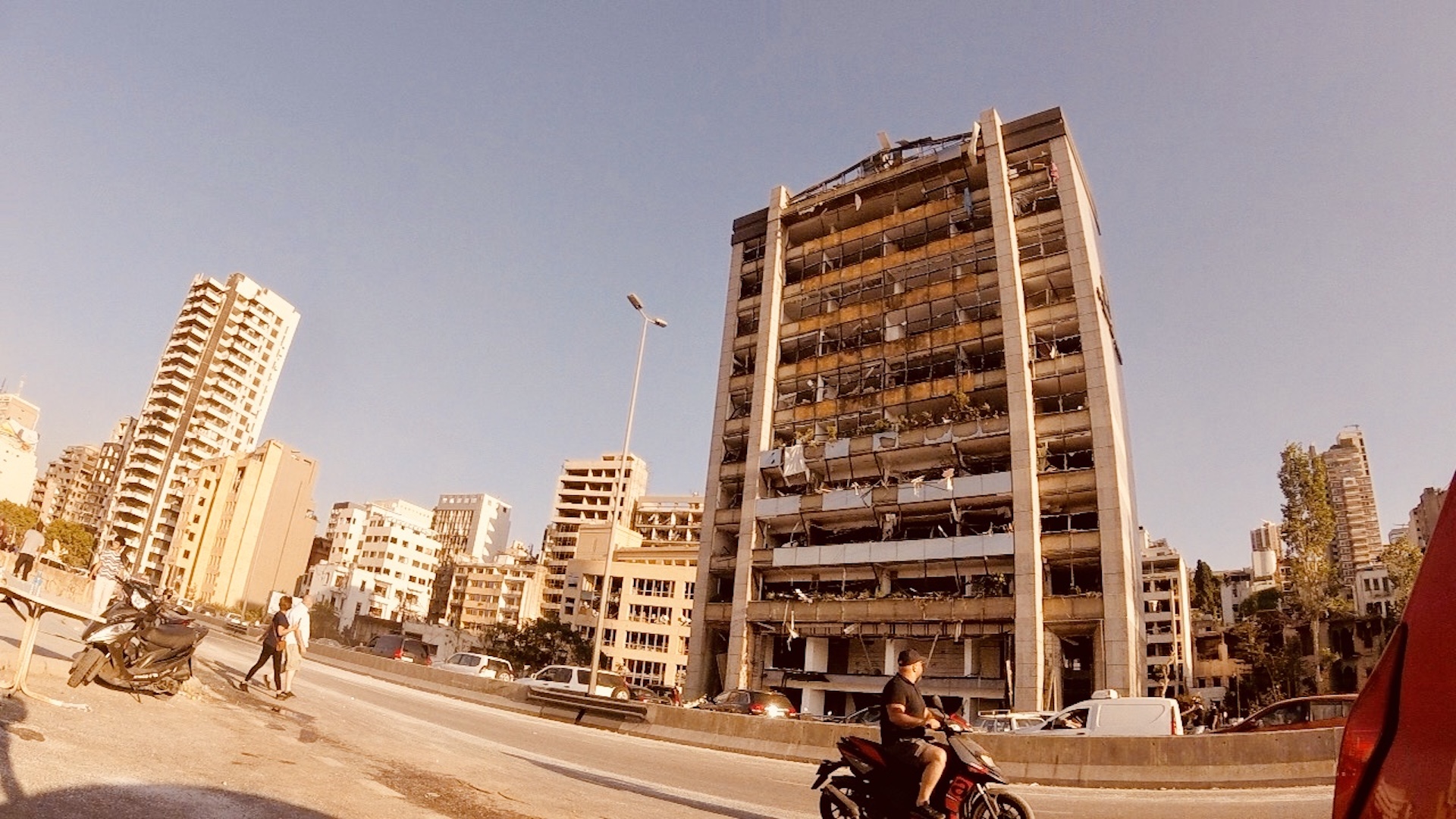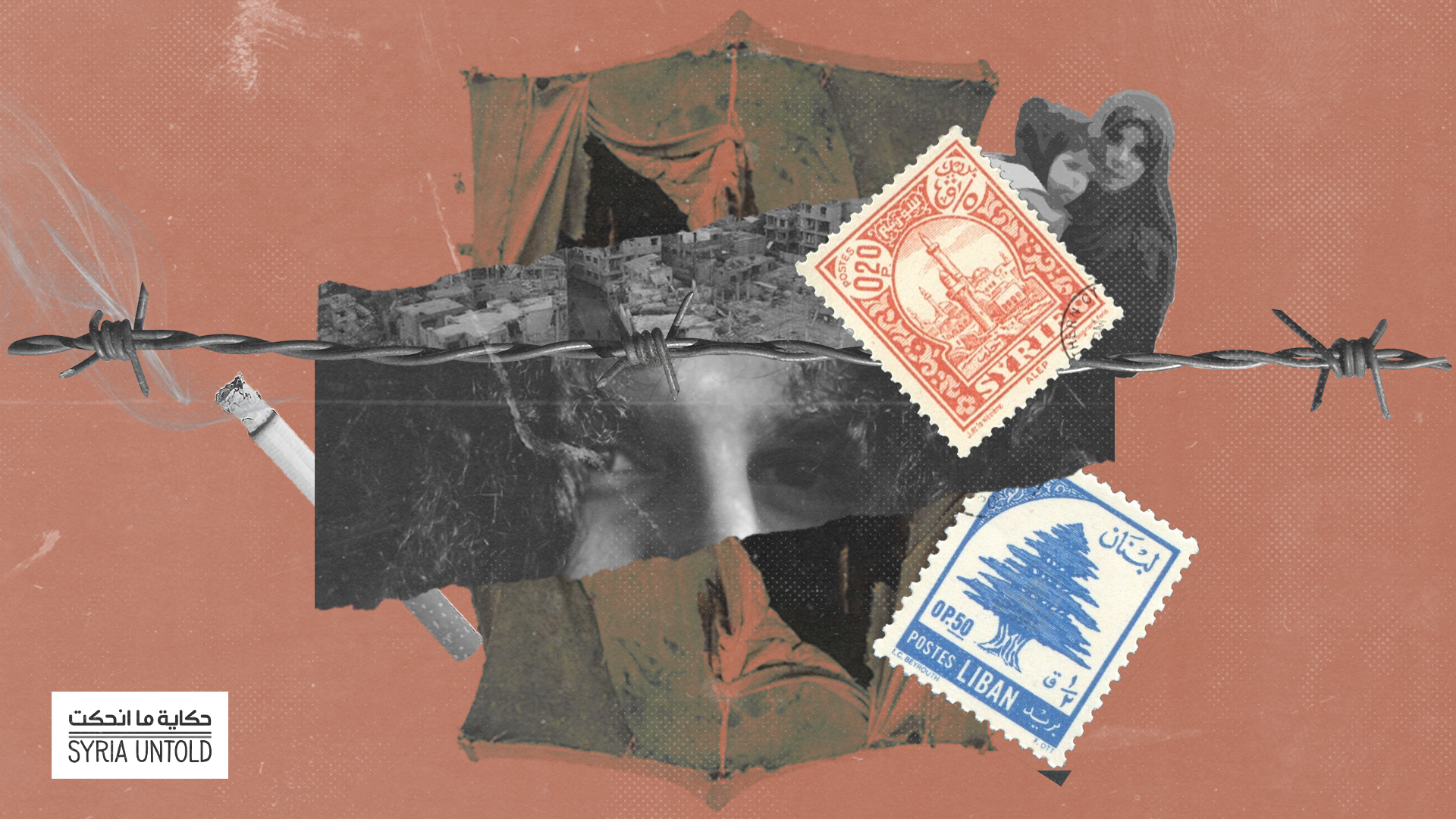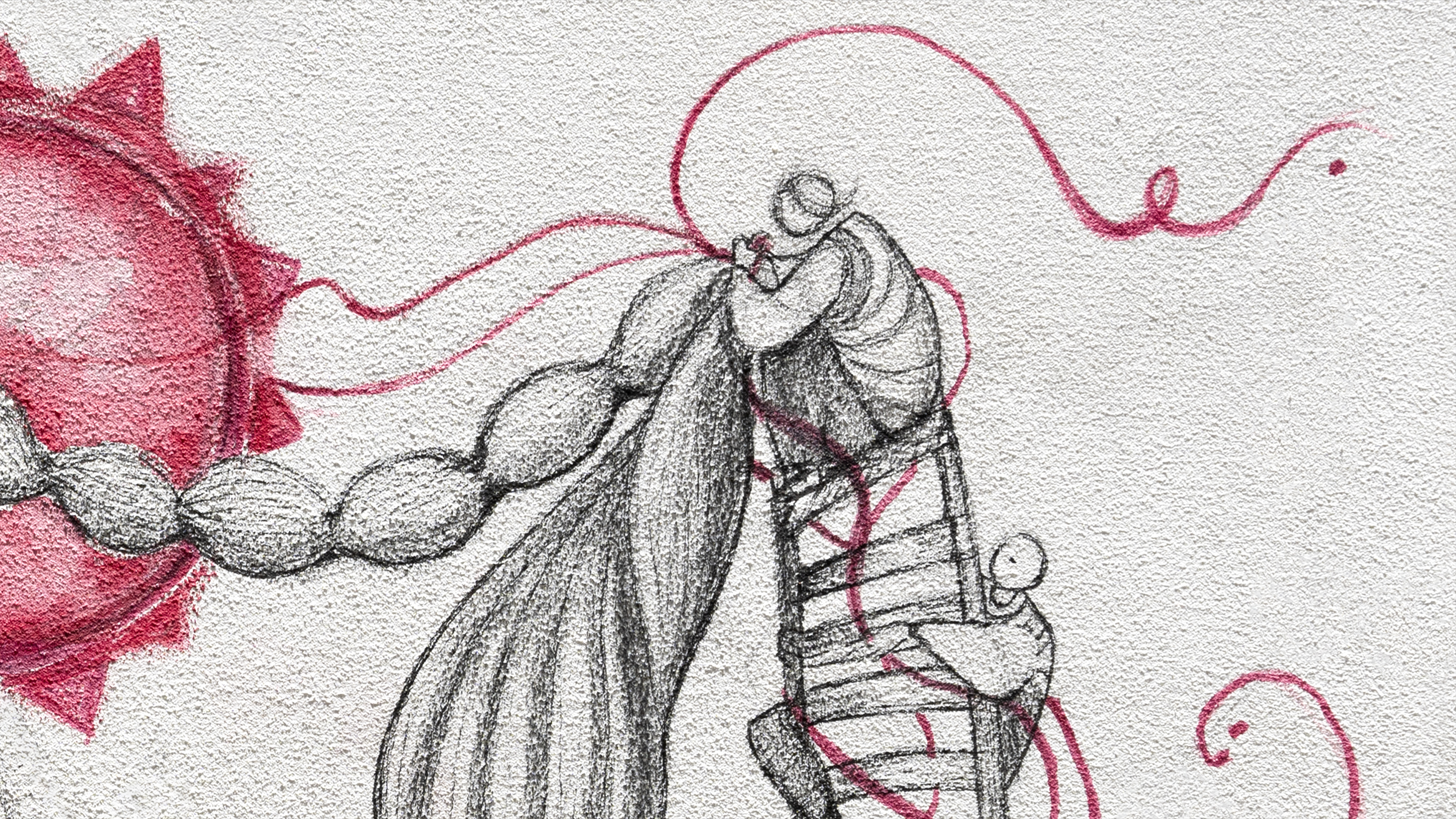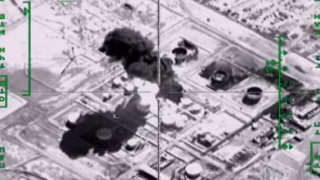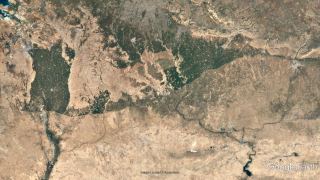This article is part of a dossier in partnership between SyriaUntold and Orient XXI, exploring the consequences of the devastating earthquake that struck Turkey and Syria in February 2023.
Bani Issa and nearby villages
Nearly a month after the devastating February 6th earthquake, Abeer and Grace arrived in Bani Issa, a small village several kilometers south of Qardaha, in northwestern Syria, in Latakia province. They were shocked by the scene they encountered: five women, the youngest being a 50-year-old and the oldest their 80-year-old mother, in a house cracked by the earthquake. They were going about their lives as usual, not realizing that the already existing crack may develop and widen in the case of new aftershocks. The scene was strange, painful, and shocking for the two young women visiting them, especially after they realized the four daughters were born blind. “Nothing meaningful or valuable can be really said,” Abeer commented.
Abeer Suleiman is a poet, a civil engineer, and a humanitarian activist. Her colleague, Grace Shaaban, is also an activist. After the earthquake, with the support of Syrian and Arab donors, they formed a volunteer duo team to search for victims and survivors who had not been approached by any official or civil organizations. They toured various villages, relying on their relations with local communities and helpers from the Latakia countryside, which was heavily affected by the disaster, even in its southern areas.
They were shocked by the scene they encountered: five women, the youngest being a 50-year-old and the oldest their 80-year-old mother, in a house cracked by the earthquake. They were going about their lives as usual, not realizing that the already existing crack may develop and widen in the case of new aftershocks.
During the first month of relief following the earthquake, Abeer and Grace succeeded in providing hundreds of food baskets, medicines and blankets to people living in extreme poverty. Their action drew the attention of several civil and official organizations, and even international ones such as the Emirates Red Crescent.
“The aid’s arrival to the families made us happy”, Grace said. “It added value and significance to our work”. But despite the importance and necessity of these gestures, they revealed the failure, in many similar cases, to secure relief or support.
In Bani Issa, houses cracked and buildings collapsed, leading to more than five deaths, including the death of a woman under the rubble, while her grandson suffered minor injuries. The power station in the village was so damaged that the Electricity Directorate, the local State-run power company, had to immediately demolish it. In the first hours after the disaster, people helped with the removal of rubble and rescue operations despite the heavy rains that were pouring down at the time. According to the locals, many were rescued from under the rubble before the arrival of rescue vehicles and teams.
Ahmad, a 55-year-old government employee in the Water Corporation, the local State-run water station, spent the first days with his family in the cold, next to their cracked house that was no longer habitable. No one asked about them. “Everyone was busy trying to save as many lives as possible before it was too late,” he said. “It wasn’t until the third day after the disaster that the government’s bulldozers arrived in our area.”
“Everyone was busy trying to save as many lives as possible before it was too late,” Ahmad said. “It wasn’t until the third day after the disaster that the government’s bulldozers arrived in our area. Our existence was insignificant to the media.”
His neighbor, Ayham, an unemployed civil engineer, attributed this delay to the fact that too many areas were affected by the earthquake. But this “does not mean that we have to wait so many days the rescue teams”, Ahmed continued. “Our existence was insignificant to the media.”
More families in Ain al-Arous, Deir Hanna, al-Mu’allaqah, al-Thawra, Bikrama, and other villages in Qardaha countryside faced the same situation, suffering the consequences of the earthquake. Nearly two months after the disaster, no one approached them, except volunteer teams who provided urgent food and medical supplies. An undetermined number of buildings collapsed in Ain Al-Arous, Ruwaisat Al-Basatneh, Al-Safraqiyah, and other villages a few kilometers from Qardaha. In the whole region, 6.104 families were affected by the earthquake, according to a report issued by the Latakia Relief Operations Room, for a total number of 28,078 individuals. Calls for material assistance remained unanswered in some of these villages and only documented on Facebook pages.
February 6th Earthquake: How do we understand what happened and where are we today?
14 July 2023
Off the Richter Scale: Tracking Misinformation in the Aftermath of the Kahramanmaras Earthquake
24 May 2023
Amer, a 25-year-old student at the Faculty of Engineering in Tishreen University, from Mazar al-Qatriyya, participated in the rescue operations. “We used picks and shovels to make a hole under the rubble in the collapsed buildings,” he explained. “The heavy rain and the harsh winds made our task very difficult. But we managed to open tunnels in many sites, and we reached the rooms buried under the buildings. In one case, we were able to save Nawar, a young doctor, who had sought cover under a metal bed. We found him after he turned the music up loud.”
The greater Calamity: Qabu Al-Awamiya
The greater calamity befell the village of Qabu Al-Awamiya, located halfway between Latakia and Jableh, and halfway between Latakia and Qardaha. Six buildings (about 80 apartments) collapsed, three single floor houses were destroyed. At least 30 people died, including five teachers and four students from the village school.
Despite the high number of families evacuated from their cracked houses, many displaced families could not reach shelter centers and instead sought refuge with relatives and friends. Souad Issa, 38, received entire families in a warehouse owned by her husband. They quickly equipped it with sleeping facilities and sobia (traditional wood-burning stoves). “We must do our best,” she said. “If we were in their place, they would do the same for us.”
Abeer and Grace asked one of the survivors what their needs were. “A roof,” the man replied. “We are sleeping in a car we borrowed from our neighbor because our house is threatened by two cracked buildings. None of the official authorities asked about us.”
Many displaced families could not reach shelter centers and instead sought refuge with relatives and friends. Souad Issa, 38, received entire families in a warehouse owned by her husband. “We must do our best,” she said. “If we were in their place, they would do the same for us.”
Rana Muhammad Jadid said that she miraculously survived the earthquake. Along with her husband and daughters, she remained for nearly twenty hours under the rubble, while most of the other residents died. After her rescue, she remained in the hospital for nearly a month. She is still unable to walk or stand.
“My house is completely demolished. It is all I have, just like most of the people here”, Rana said. “Forgotten by the media, the officials, and humanity, our devastated village is mourning 32 martyrs and the displacement of many families due to the earthquake. Unfortunately, no one from Latakia paid attention to us, although I have been a teacher for 25 years”. She hasn’t yet obtained any personal belongings, including identity card, certificates, university cards.
The only aid provided to the affected families in the village came through the al-Areen Humanitarian Foundation, the new official name for al-Bustan Charity Association, which was established by the Syrian businessman Rami Makhlouf, before Asma al-Assad seized it and placed it under its supervision; and through the Syrian Red Crescent. It consisted of food baskets, clothes, mattresses, and some medicines, but not tents.
The City of Qardaha: Evacuations and the Real Estate Market
In Qardaha city, with a population of more than 50.000 people, no buildings collapsed, but many were damaged on different levels. According to Ali al-Qawzi, an engineer at the head of the city council, up to March 25th 194 cases of evacuations were ordered as the buildings needed reinforcements or to be demolished.
From Aleppo to Beirut, cities burning
26 February 2021
The report “Latakia Governorate Operations Room, Emergency Response Campaign for the Earthquake Disaster” published even more dramatic figures: 166 demolished buildings, 834 in need of restoration, and 505 to be reinforced. More than 90 percent of the affected people in Qardaha and its countryside resorted to their relatives and acquaintances for accommodation.
The reason for them was not only due to the State’s failure to provide alternative housing. The aftermath of the disaster was marked by the rise in rent prices throughout the country besides food price inflation of more than 30%.
Mufeed, 40, from the Ruwaisa neighborhood, is a government employee whose house was emptied after a technical inspection. “I tried to rent a house, but I could not because the rental prices doubled in less than a month,” he explained. “Furthermore, payment must be made in advance for at least six months or a year.”
“I tried to rent a house, but I could not because the rental prices doubled in less than a month,” Mufeed explained. “Furthermore, payment must be made in advance for at least six months or a year.”
“Many houses were available for rent before the earthquake in Qardaha, with various offers of different prices and locations”, Mufeed added. “But after the earthquake, several rental agencies announced that there was a shortage of apartments for rent, so their prices rose. Houses whose rent was up to 200,000 ($27) went up to around 500,000 ($66).” Moreover, some landlords asked for a higher rent when they knew that it would be paid by private parties or donors.
On the other hand, many people gave their homes for free. Some provided water and food. Others opened warehouses and gave access to heating and bathrooms.
Two Shelter Centers only
Two months after the disaster, the number of shelters installed by the Syrian government and supervised by licensed associations, such as the Syrian Trust for Development and the Syrian Red Crescent, decreased from 50 to 19. The measures implemented by the local authorities included the submission of a document certifying the damage signed by the municipality or the mukhtar, or a document provided by the Technical Inspection Committees of the Houses.
In the Qardaha region, only two shelters remained at the time of writing. The first is in the town of Istamo, the second is the Qardaha Hotel, in the center of Qardaha. It opened in early April, with a capacity of 64 families for a maximum of six months. The shelter initially housed 24 families, according to the Latakia Relief Operations Room. The number increased in early April, after the transfer of nine families from the Istamo shelter, following the reports of the Public Safety Committees and the Relief Subcommittee, that their houses were unsafe. Ali al-Qawzi stated that “the priority is for those whose houses were destroyed by the earthquake, then to those whose houses were declared uninhabitable and sealed, pending a decision on demolishing or reinforcing them, once the Public Safety Committees’ decision would be finally issued in coordination with the Syrian Trust for Development.” In general, “residing in shelter centers is better than living with relatives. All the family’s needs are available in shelter centers under a defined system.” However, Mona, a woman from the Istamo village who lived for a period in the Qardaha shelter center, disagreed: “it is better to move to a private residence, because in the end, a person has nothing but his home and family.”
“it is better to move to a private residence, because in the end, a person has nothing but his home and family.”
The authorities are seeking to reduce the number of shelter centers in the governorate, by tightening the conditions for accepting families. They primarily accept cases of complete demolition, then second degree cases (crack and necessary demolition; crack and need for restoration). So far, the authorities have not completed a detailed database that includes the already demolished buildings, the ramshackle ones, and those that need restoration, which constitutes the largest number.
The report clearly shows that the people registered as having their houses destroyed or no longer fit for habitation largely exceeds those who were accommodated in shelters. According to these numbers, 748 do not have a place to live, with an average of four families for each building. These ones were forced to rent another house, or to live with their relatives.
Among the ongoing problems is school safety after the earthquake. The Relief Operations Room’s report indicates that 164 schools were inspected in the Qardaha region: 16 are awaiting the decision of the Supreme Safety Committee and 21 were reported unsafe. This means an expected disruption in the teaching cycle. At the same time, the Directorate of Education in Lattakia requested school reopening, starting on March 5th. But most schools did not comply with this decision, and many parents refused to send their children to those schools.
No papers, no future
In late April, the government announced the completion of nearly 30% of residential tower buildings for those affected by the earthquake with the Emirates support. Moreover, prefabricated buildings arrived from China, and their installation started in al-Fayd area in Jableh. When it comes to the disaster’s next stage, the Syrian government paints a bright picture. It promises to overcome various issues that accompanied the relief operations, including the relocation of those who completely lost their houses.
At the same time, the problem related to the loss of property papers is not even mentioned yet. This features many complicated stories that go back to the conflict in Syria. As a result of the sluggishness of the Syrian administrative apparatus in general and the lack of sufficient flexibility, many cases are still stuck in the maze of having lost property papers, especially houses and cars. Mohammed Mustafa from Mazar al-Qatariyya said that two months after the earthquake he was still unable to obtain his car papers, which was buried under the rubble of his house. Since he had not yet transferred the ownership from the previous owner to himself, he must now file a lawsuit confirming the car sale and obtain a contract or title deed for the car.
As a result of the sluggishness of the Syrian administrative apparatus in general and the lack of sufficient flexibility, many cases are still stuck in the maze of having lost property papers, especially houses and cars.
The complexity of property problems weighs perhaps even more on rural residents than urban ones, considering the inability to rebuild houses. These concerns are evident among those affected by the earthquake in Qardaha region, especially since they belong mostly to poor social groups, not owning anything. Deeply affected by the earthquake, they have neither money nor power.


